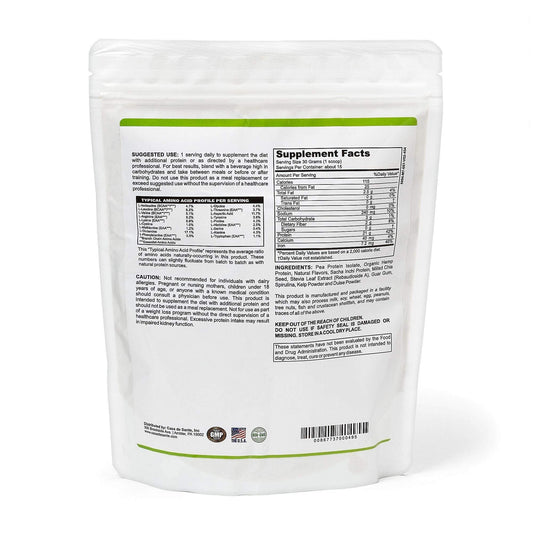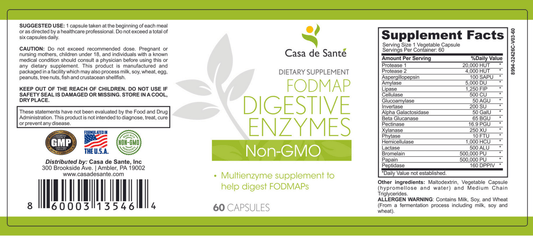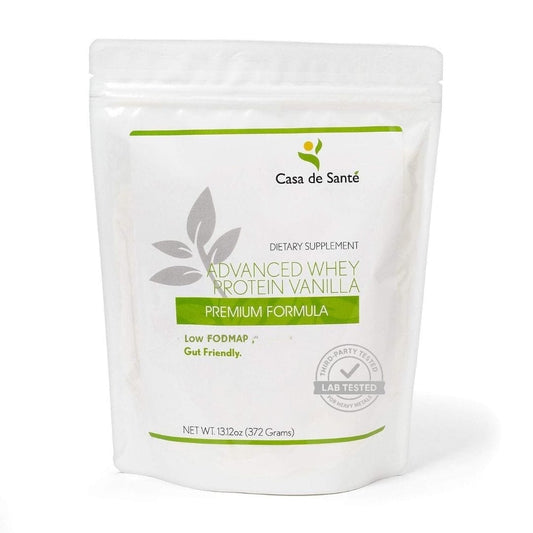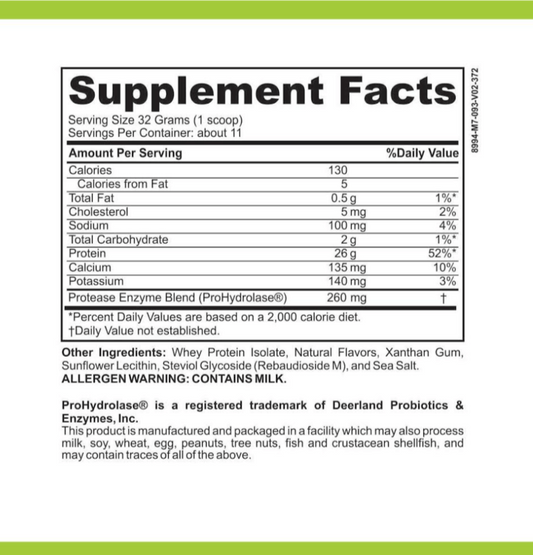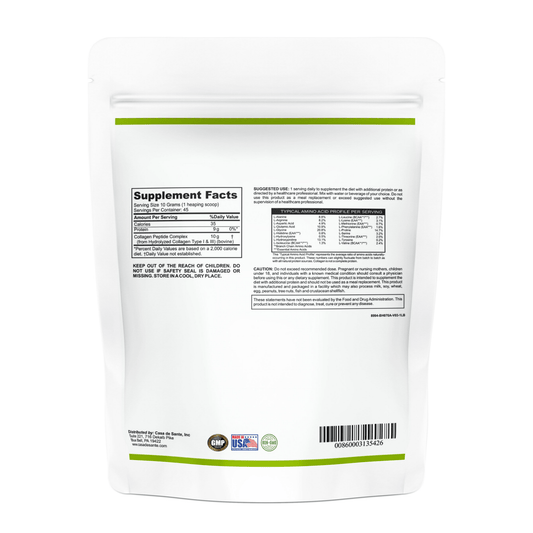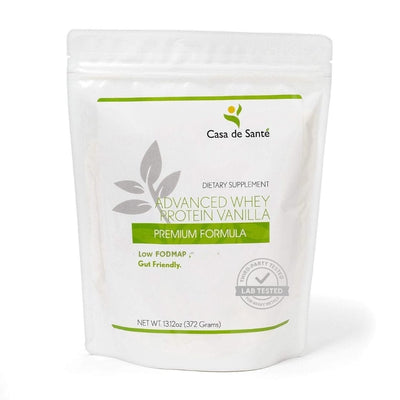What Exercises Are Good for Gastroparesis? A Comprehensive Guide to Relief
Living with gastroparesis can be tough, and figuring out how to manage it is often a challenge. One option that many people overlook is exercise. While it might seem counterintuitive to think about working out when you're dealing with digestive issues, certain exercises can actually help improve symptoms and overall well-being. In this guide, we’ll explore what exercises are good for gastroparesis and how they can make a difference in your daily life.
Key Takeaways
- Gentle exercises like walking can aid digestion without overwhelming your system.
- Stretching and yoga can promote relaxation and digestive health.
- Strengthening your core can help support stomach muscles and improve function.
- Breathing exercises can reduce stress, which may alleviate some symptoms.
- Always consult with a healthcare professional before starting any new exercise program.
Understanding Gastroparesis and Its Impact
What Is Gastroparesis?
Okay, so what is gastroparesis? Basically, it's a condition where your stomach doesn't empty food the way it should. Normally, your stomach muscles contract to move food into your small intestine. But with gastroparesis, those contractions slow down or don't work at all. This can cause food to sit in your stomach for way too long. Think of it like a traffic jam in your digestive system. This delayed gastric emptying can be caused by a number of things, including nerve damage, diabetes, or even certain medications.
Common Symptoms of Gastroparesis
Gastroparesis symptoms can really vary from person to person, which makes it kind of a tricky condition to pin down. Some people have mild symptoms that come and go, while others deal with pretty severe issues on a daily basis. The most common complaints include:
- Nausea
- Vomiting
- Bloating
- Feeling full really quickly when you eat
- Abdominal pain
Some people also experience heartburn, a loss of appetite, and even weight loss. It's not a fun situation, and it can really mess with your day-to-day life. It's important to keep track of your most common symptoms to share with your doctor.
How Gastroparesis Affects Daily Life
Gastroparesis can throw a major wrench into your daily routine. It's not just about feeling sick after meals; it can impact your energy levels, your ability to work or go to school, and even your social life. Imagine constantly worrying about when your next flare-up will be or having to carefully plan every meal around your condition. It can be exhausting! Plus, dealing with chronic nausea and pain can take a toll on your mental health. It's easy to feel isolated and frustrated when your body isn't cooperating. Finding ways to manage your symptoms and connect with others who understand what you're going through is super important.
Living with gastroparesis is like constantly walking a tightrope. You have to be mindful of what you eat, how much you eat, and when you eat. It requires a lot of planning and adjustments, and it can be incredibly frustrating when things don't go as planned. It's a constant balancing act to try and maintain some sense of normalcy.
Benefits of Exercise for Gastroparesis
It might seem counterintuitive to exercise when you're dealing with gastroparesis, but the right kind of physical activity can actually make a real difference. It's not about intense workouts; it's about gentle movement that supports your digestive system and overall well-being. Let's explore how exercise can help.
How Exercise Affects Digestion
Exercise can influence your digestion in a few key ways. Physical activity can help stimulate the muscles in your digestive tract, encouraging them to move food along more efficiently. This is especially helpful when gastroparesis slows things down. It's like giving your digestive system a gentle nudge to do its job. Plus, exercise can help reduce bloating and discomfort by promoting the release of gas.
Improving Mental Health Through Physical Activity
Living with gastroparesis can be tough on your mental health. The constant discomfort and dietary restrictions can lead to stress, anxiety, and even depression. Exercise is a fantastic way to combat these feelings. When you exercise, your body releases endorphins, which have mood-boosting effects. Even a short walk can make you feel more relaxed and positive. It's a simple way to take care of your mind while also helping your body.
Enhancing Quality of Life with Regular Movement
Gastroparesis can significantly impact your quality of life, making it hard to enjoy everyday activities. Regular, gentle exercise can help you regain some control and improve your overall well-being. It can increase your energy levels, making it easier to manage daily tasks. Plus, exercise can help you sleep better, which is crucial for managing gastroparesis symptoms. Finding an exercise routine that works for you can make a big difference in how you feel, both physically and emotionally. Research indicates that gastroparesis is associated with increases in both innate and adaptive immune cells.
Incorporating exercise into your routine doesn't have to be a chore. Find activities you enjoy, whether it's walking, yoga, or swimming. The key is to listen to your body and not push yourself too hard. Start slowly and gradually increase the intensity and duration of your workouts as you feel comfortable.
Gentle Exercises for Gastroparesis Relief

When you're dealing with gastroparesis, the idea of exercise might seem daunting. But gentle movement can actually be a really helpful tool in managing your symptoms. The key is to start slow and listen to your body, avoiding anything that makes you feel worse. Think of these exercises as a way to gently encourage your digestive system, not as a high-intensity workout.
Walking and Its Benefits
Walking is probably one of the best and easiest exercises you can do. It's low-impact, accessible to most people, and can really help stimulate your digestive system. A short walk after a meal can encourage your stomach to empty a bit faster.
Here's a simple plan to get started:
- Start with 10-15 minute walks after meals.
- Gradually increase the duration as you feel comfortable.
- Pay attention to how your body feels and adjust accordingly.
Walking helps with blood sugar control, which is especially important if you have diabetic gastroparesis. It also helps reduce stress, which can sometimes worsen gastroparesis symptoms.
Stretching Exercises to Consider
Gentle stretching can also be beneficial. The goal here is to ease tension in your abdominal area and promote relaxation. Think of stretches that gently twist or extend your torso. These can help to massage your internal organs and encourage movement. Remember to breathe deeply during each stretch.
Some stretches to try:
- Torso Twists: Gently twist from side to side while seated or standing.
- Side Stretches: Reach one arm overhead and lean gently to the side.
- Cat-Cow Stretch: A yoga pose that gently moves the spine and abdominal area.
Yoga Poses for Digestive Health
Certain yoga poses can be particularly helpful for gastroparesis. Yoga combines stretching, breathing, and mindfulness, all of which can be beneficial for managing your symptoms. Poses that gently compress or massage the abdomen can help stimulate digestion. Always listen to your body and avoid any poses that cause discomfort.
Here are a few poses to consider:
- Child's Pose: A relaxing pose that gently compresses the abdomen.
- Supine Twist: A gentle twist performed while lying on your back.
- Mountain Pose: Improves posture and can aid in digestion by aligning the body properly. You can find yoga for gastroparesis online to help alleviate symptoms.
Strengthening Exercises for Stomach Muscles
Core Strengthening Techniques
When dealing with gastroparesis, it's easy to think that any kind of abdominal work is off-limits. However, gentle core strengthening can actually be beneficial. The key is to focus on exercises that don't put excessive pressure on your stomach. Think about engaging your core muscles during everyday activities, like sitting or standing. This helps to support your digestive system without causing discomfort.
- Pelvic Tilts: Lying on your back with knees bent, gently tilt your pelvis up and down. This engages your lower abdominal muscles without straining your stomach.
- Diaphragmatic Breathing: Focus on breathing deeply from your diaphragm, which can help massage your internal organs and improve core stability.
- Modified Plank: Instead of a full plank, try holding a plank on your knees. This reduces the pressure on your abdomen while still working your core muscles.
Resistance Training for Improved Function
Resistance training doesn't have to mean heavy lifting. For individuals with gastroparesis, the goal is to improve overall strength and function, which can indirectly support digestive health. Light resistance exercises can help improve muscle tone and support your body's natural processes. Remember to listen to your body and stop if you feel any discomfort. It's all about finding what works for you and avoiding anything that exacerbates your symptoms. Consider consulting with a physical therapist to ensure you're using proper form and technique.
- Light Weightlifting: Using very light weights (or even just body weight), perform exercises like bicep curls, tricep extensions, and squats. These exercises help build overall strength without directly impacting the stomach.
- Resistance Bands: Resistance bands are a great way to add resistance to exercises without using weights. They're also easy on the joints and can be adjusted to different levels of resistance.
- Chair Exercises: Seated exercises, like seated leg raises or arm raises, can be a good option if you have difficulty standing for long periods.
Using Stability Balls for Support
Stability balls can be a fantastic tool for improving core strength and stability. They can also help improve posture and balance, which can indirectly benefit your digestive system. Using a stability ball can make exercises more challenging and engaging, but it's important to start slowly and gradually increase the intensity as you get stronger. Always ensure you have proper support and balance to avoid falls or injuries.
Stability balls can be used for a variety of exercises, from seated core work to modified push-ups. The unstable surface forces your muscles to work harder to maintain balance, which can lead to improved core strength and stability. Remember to choose a ball that is the right size for your height and to inflate it properly.
Here are some exercises to try:
- Seated Bounces: Simply sitting on the ball and gently bouncing can help engage your core muscles and improve balance.
- Wall Squats: Place the ball between your back and a wall, and perform squats. This provides support for your back and helps engage your core muscles.
- Core Engagement: While seated on the ball, try lifting one leg at a time or rotating your torso gently. These exercises help strengthen your core muscles and improve stability. Remember to consult with a healthcare professional before starting any new exercise program, especially if you have gastroparesis. They can help you create a personalized exercise plan that is safe and effective for your individual needs. It's also important to pay attention to your body and stop if you experience any pain or discomfort. Remember, the goal is to improve your overall health and well-being, not to push yourself too hard. If you have delayed gastric emptying, it's important to be gentle with your body.
Breathing and Relaxation Techniques

Deep Breathing Exercises
Okay, so, deep breathing. Sounds simple, right? But when you're dealing with gastroparesis, it can be a game-changer. The idea is to tap into your body's natural relaxation response, which can help calm your digestive system. I know, easier said than done when you're feeling bloated and nauseous. But trust me, even a few minutes of focused breathing can make a difference.
Here's a basic one to try:
- Find a quiet spot where you won't be disturbed.
- Sit comfortably or lie down.
- Inhale slowly and deeply through your nose, filling your belly with air. Imagine you're inflating a balloon in your stomach.
- Exhale slowly through your mouth, releasing all the air. Feel your belly deflate.
- Repeat for 5-10 minutes, focusing on your breath. If you have worrisome thoughts, try focusing on your breathing and thinking about breathing out tension, and breathing in deeper relaxation.
I've found that doing this before meals can actually help reduce some of the discomfort afterwards. It's like prepping my body to digest, instead of going in stressed and tense.
Mindfulness and Meditation Practices
Mindfulness and meditation are like the next-level versions of deep breathing. It's not just about calming your body, but also about training your mind to be more present and less reactive. This can be super helpful for managing the anxiety and stress that often come with gastroparesis. Plus, regular practice of relaxation appears to be critical in learning how to become deeply relaxed and producing health benefits from relaxation. If you have difficulty in becoming relaxed, special coaching or individual tailoring of a relaxation technique may be required.
Here are some ways to get started:
- Start small: Even 5 minutes a day can make a difference.
- Use guided meditations: There are tons of free apps and videos online that can walk you through different meditation techniques.
- Focus on your senses: Pay attention to what you can see, hear, smell, taste, and touch in the present moment. This helps anchor you in the now and distract you from worries about the future or regrets about the past.
Incorporating Relaxation into Daily Routines
Okay, so you've tried deep breathing and meditation. Now, how do you make relaxation a regular part of your life? It's all about finding small ways to weave it into your daily routine.
Here are some ideas:
- Take short breaks throughout the day: Even a 5-minute break to stretch, breathe deeply, or listen to calming music can help reduce stress.
- Create a relaxing bedtime routine: This could include taking a warm bath, reading a book, or listening to a guided meditation. Avoid screens for at least an hour before bed.
- Practice mindful eating: Pay attention to the taste, texture, and smell of your food. Eat slowly and savor each bite. This can help improve digestion and reduce overeating.
| Activity | Duration | Frequency | Benefits the same time, it's important to be realistic. Gastroparesis is a chronic condition, and there's no magic bullet. But by incorporating these breathing and relaxation techniques into your daily routine, you can significantly improve your symptoms and quality of life.
Consulting with Healthcare Professionals
It's easy to get lost in the sea of information out there about gastroparesis. That's why talking to doctors and therapists is super important. They can give you advice that's just right for you.
Importance of Medical Guidance
Getting a doctor's opinion is the first step. They can check you out, figure out how bad your gastroparesis is, and tell you what treatments might work. Don't try to handle this all by yourself. A doctor can also help you understand how exercise fits into your overall treatment plan. They know your medical history and can make sure you're exercising safely.
Working with Physical Therapists
Physical therapists aren't just for athletes. They can also help people with gastroparesis. They can show you exercises that are easy on your stomach and help you get stronger without making your symptoms worse. They can also teach you how to breathe and relax, which can help with digestion.
Creating a Personalized Exercise Plan
Everyone's different, so what works for one person might not work for you. A healthcare team can help you make an exercise plan that fits your needs and abilities. This plan might include:
- Figuring out what exercises are safe for you.
- Setting goals that are realistic.
- Changing the plan as you get better.
It's important to listen to your body and not push yourself too hard. If an exercise makes your symptoms worse, stop doing it and talk to your doctor or therapist. They can help you find something else that works better.
Community Support and Resources
It's easy to feel alone when dealing with gastroparesis, but remember, you're not! Connecting with others who understand what you're going through can make a huge difference. There are many avenues for finding support and information, from local groups to online forums.
Finding Support Groups
Support groups can be a lifeline. Sharing experiences and tips with others who have gastroparesis can be incredibly validating and helpful. It's a space where you can talk openly about your challenges without feeling judged. These groups often provide practical advice on managing symptoms, dealing with doctors, and navigating daily life. To find a support group, you could start by asking your doctor or searching online for local or virtual options. Don't be afraid to try a few different groups until you find one that feels like a good fit. Remember, the goal is to find a community where you feel comfortable and understood.
Online Communities for Gastroparesis
If you can't find a local support group, or if you prefer connecting from the comfort of your home, online communities are a great option. There are many forums and social media groups dedicated to gastroparesis. These platforms allow you to connect with people from all over the world, share your story, ask questions, and get advice. Just be sure to verify any medical advice you receive online with your doctor. The IFFGD's resources are a great place to start when looking for reliable information and connections.
Educational Resources for Patients
Knowledge is power when it comes to managing gastroparesis. There are many educational resources available to help you learn more about the condition, its causes, and its treatments. These resources can include:
- Websites from reputable medical organizations
- Books and articles written by doctors and researchers
- Webinars and online courses
Taking the time to educate yourself can help you make informed decisions about your care and advocate for your needs. Understanding the nuances of gastroparesis empowers you to work more effectively with your healthcare team and take control of your health.
It's important to stick to reliable sources and discuss any new information with your doctor. Staying informed is a key part of managing gastroparesis and improving your quality of life.
Wrapping It Up
Living with gastroparesis can be tough, but finding the right exercises might just help ease some of those annoying symptoms. Remember, it’s all about listening to your body and figuring out what works for you. Whether it’s gentle yoga, light walking, or some simple stretches, every little bit can make a difference. Don’t forget to chat with your doctor before starting anything new, just to be safe. And hey, connecting with others who get it can really help too. You’re not alone in this. So, take it one step at a time, and hopefully, you’ll find some relief along the way.
Frequently Asked Questions
What is gastroparesis?
Gastroparesis is a condition where the stomach muscles don't work properly, making it hard for food to move through the digestive system.
What are common symptoms of gastroparesis?
Common symptoms include nausea, vomiting, feeling full after eating small amounts, bloating, and stomach pain.
Can exercise help with gastroparesis?
Yes, gentle exercises can help improve digestion and overall well-being for people with gastroparesis.
What types of exercises are good for gastroparesis?
Gentle exercises like walking, stretching, and yoga are often recommended for those with gastroparesis.
Should I talk to a doctor before starting an exercise routine?
Absolutely! It's important to consult with a healthcare professional to create a safe and effective exercise plan.
How can I find support for managing gastroparesis?
You can join support groups, both online and in-person, to connect with others who understand what you're going through.


